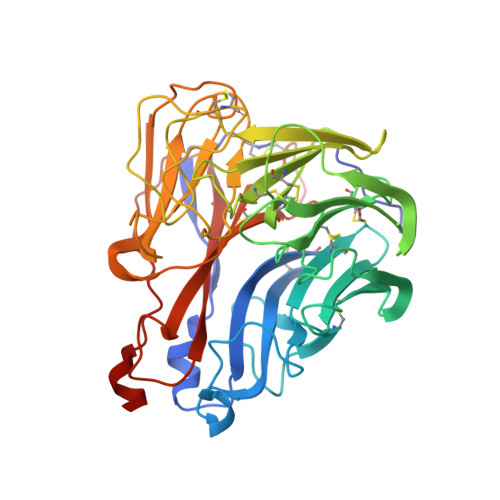Mechanism-based covalent neuraminidase inhibitors with broad-spectrum influenza antiviral activity
Kim, J.-H., Resende, R., Wennekes, T., Chen, H.M., Bance, N., Buchini, S., Watts, A.G., Pilling, P., Streltsov, V.A., Petric, M., Liggins, R., Barrett, S., McKimm-Breschkin, J.L., Niikura, M., Withers, S.G.(2013) Science 340: 71-75
- PubMed: 23429702
- DOI: https://doi.org/10.1126/science.1232552
- Primary Citation of Related Structures:
3W09 - PubMed Abstract:
Influenza antiviral agents play important roles in modulating disease severity and in controlling pandemics while vaccines are prepared, but the development of resistance to agents like the commonly used neuraminidase inhibitor oseltamivir may limit their future utility. We report here on a new class of specific, mechanism-based anti-influenza drugs that function through the formation of a stabilized covalent intermediate in the influenza neuraminidase enzyme, and we confirm this mode of action with structural and mechanistic studies. These compounds function in cell-based assays and in animal models, with efficacies comparable to that of the neuraminidase inhibitor zanamivir and with broad-spectrum activity against drug-resistant strains in vitro. The similarity of their structure to that of the natural substrate and their mechanism-based design make these attractive antiviral candidates.
Organizational Affiliation:
Department of Chemistry, University of British Columbia, 2036 Main Mall, Vancouver, British Columbia V6T 1Z1, Canada.




















